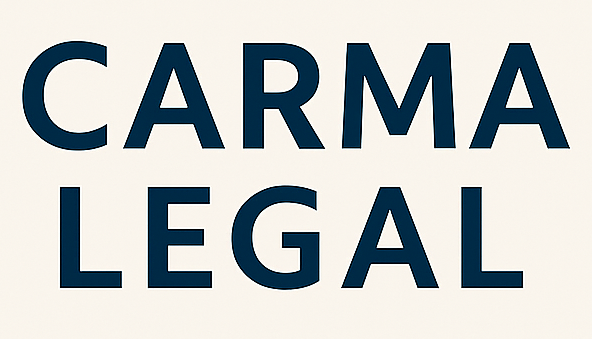Review compensation process
In the aftermath of a crash, you may face medical bills, lost income, and property damage. Understanding compensation for car accident injuries can help you navigate the insurance and legal systems more confidently. In many jurisdictions, damages are divided into special (economic) and general (noneconomic) categories [1]. As you pursue a claim, you’ll encounter various categories of recovery, each governed by distinct rules and evidence requirements.
Compensatory damages explained
Compensatory damages reimburse you for losses directly linked to the accident. They fall into two main subcategories: economic damages, which cover tangible financial losses, and noneconomic damages, which address intangible harms. Your total award often combines both types to reflect the full impact on your life.
Economic versus noneconomic
Economic damages include quantifiable costs such as:
- Medical expenses, including emergency care, surgeries and rehabilitation
- Lost wages and benefits due to time away from work
- Future earning capacity if the injury causes long-term impairment
- Vehicle repairs or replacement costs
Noneconomic damages compensate for subjective losses like pain and suffering, emotional distress and loss of enjoyment of life. Assigning a dollar value to these harms can be challenging, but experienced attorneys use proven methods to estimate fair recovery [2].
Punitive damages overview
In certain cases, courts award punitive damages to punish the at-fault party for gross negligence or intentional misconduct. These awards go beyond reimbursement and serve as a deterrent against similar behavior. Punitive damages require clear evidence that the defendant’s conduct was especially reckless or wanton.
| Damage type | Covers | Evidence required |
|---|---|---|
| Economic | Medical bills, lost wages, property repairs | Receipts, invoices, pay stubs |
| Noneconomic | Pain and suffering, emotional distress | Medical records, witness statements |
| Punitive | Gross negligence | Court rulings, deposition transcripts |
Gather necessary evidence
Solid documentation forms the backbone of any successful claim. From detailed medical records to photos of the accident scene, gathering and preserving information early can strengthen your case. In addition, objective proof helps you counter low settlement offers from insurers.
Medical documentation
Your medical records demonstrate the severity of your injuries and the care you received. Be sure to collect:
- Emergency room reports
- Doctor’s notes and specialist evaluations
- Hospital bills and itemized statements
- Rehabilitation and physical therapy records
Accurate and complete medical documentation not only supports your request for economic damages but also reinforces claims for pain and suffering.
Financial records
To recover lost wages and out-of-pocket expenses, you need concrete proof of your financial losses. Gather:
- Pay stubs and employment records
- Proof of benefits, including health and disability coverage
- Invoices for medication, home care or assistive equipment
- Receipts for transportation costs to medical appointments
Accident scene proof
Documenting the scene itself can clarify fault and liability. If possible, obtain:
- Photographs of vehicle damage, skid marks and road conditions
- Police reports with narrative descriptions and officer findings
- Witness statements and contact information
- Video surveillance or dashcam footage
Calculate your damages
Once you have comprehensive evidence, you can begin to quantify your losses. Accurate calculations ensure that you seek fair recovery and avoid undervaluing your claim.
Medical expenses
Start by totaling all past and projected medical costs. Include:
- Hospital and emergency care bills
- Doctor visits and specialist consultations
- Physical therapy, chiropractic care or alternative treatments
- Prescription medication and durable medical equipment
In Florida, Personal Injury Protection insurance covers up to $10,000 in medical expenses, but you may need to pursue additional recovery if costs exceed that limit [3].
Lost income and earning capacity
Calculate wages lost due to missed work and factor in bonuses, promotions or overtime you might have earned. If your injuries cause long-term disability, you can also claim diminished future earning capacity. Document base salary, pay rate and any additional benefits.
Pain and suffering valuation
Valuing noneconomic damages often requires a multiplier method or per diem approach. Under the multiplier method, you multiply total economic damages by a number (typically between 1.5 and 5) depending on injury severity. Major surgeries, permanent disability or loss of consortium can justify higher multipliers and even million-dollar awards, as verdicts in clear permanent disability cases often reach seven figures [4]. On the other hand, soft tissue and whiplash claims remain undervalued unless backed by objective medical evidence and a strong liability posture.
Property damage costs
Property damage, such as vehicle repair or replacement, is part of your compensatory claim. The average auto property damage claim was over $3,800 in 2018, reflecting repair costs and diminished value [2].
Navigate insurance complexities
Insurance companies have their own evaluation methods and priorities, which may not align with your best interests. Recognizing their tactics helps you manage expectations and avoid traps that could lower your recovery.
Company evaluation methods
Insurers use proprietary algorithms, such as Colossus, to estimate claim value. These computer-generated figures tend to be conservative and may not reflect your unique circumstances [4]. As a result, initial offers often fall short of full recovery.
Dealing with adjusters
Adjusters aim to resolve claims quickly and minimize payouts. When you speak with them:
- Provide facts, not opinions or detailed medical histories
- Avoid signing medical authorizations without understanding implications
- Do not accept the first settlement offer, which is usually below true value
If you have concerns about direct communication, a skilled car accident attorney can handle all discussions on your behalf.
Understanding coverage limits
Personal Injury Protection, liability and uninsured motorist policies each have specific limits. In some states, uninsured or underinsured motorist coverage may supplement your recovery if the at-fault party lacks sufficient insurance. Review your policy and consider consulting an uninsured motorist claim lawyer or an underinsured motorist claim attorney if coverage issues arise.
Determine liability and fault
Establishing fault is essential for your claim. You must show that another party’s negligence caused the accident and your injuries.
Proving negligence
Negligence requires four elements:
- Duty of care: The other driver owed you a reasonable standard of care
- Breach: They violated that duty, for example by speeding or distracted driving
- Causation: Their actions directly caused the collision and your injuries
- Damages: You suffered quantifiable losses
To prove these elements, you rely on police reports, witness statements and expert analysis.
Comparative fault rules
If you share fault, your recovery will be reduced by your percentage of responsibility. Many states follow comparative fault systems, which allow you to recover damages even if you bear some blame. For example, you may still claim compensation if you are found 20 percent at fault, but your award will be reduced accordingly [5].
Pre existing conditions
If the crash aggravates a prior condition, you can include those costs in your claim. Proper documentation must show how the accident worsened your previous injury to secure additional recovery [6].
File your claim timely
Missing deadlines can forfeit your right to compensation. Staying aware of time limits and procedural requirements protects your claim.
Statute of limitations
Each state sets a deadline for personal injury lawsuits, often ranging from one to six years. Filing after this period typically results in dismissal. Confirm the statute of limitations in your jurisdiction and start the process well before the deadline.
Notice requirements
Insurance policies often require prompt notice of a claim. Notify the at-fault party’s insurer in writing, providing basic details of the accident. Keep copies of all correspondence.
Submission process
Completing claim forms accurately is crucial. Include:
- Accident date, location and involved parties
- Description of injuries and treatment history
- Itemized list of damages and supporting documents
Errors or omissions can delay processing or give insurers grounds to deny your claim.
Negotiate with insurers
Initial settlement offers tend to be low. A strategic negotiation can significantly increase your recovery.
Initial settlement offers
Adjusters often present an early offer as an apparent compromise. However, this figure is usually the lowest end of what they are willing to pay. Accepting it can lock you into an inadequate settlement.
Evidence driven demands
Counteroffers should reference concrete evidence, such as medical bills, wage statements and expert reports. Demonstrating the full scope of your damages puts pressure on insurers to raise their offer.
Counteroffers and tactics
Insurers may use tactics like reinterpreting accident dynamics or questioning symptom severity. Stay firm, maintain records of all interactions and consider consulting an insurance claim lawyer car accident for negotiation support.
Consider legal representation
While you can handle a claim on your own, legal counsel often yields higher recoveries and smoother processes.
Why hire an attorney
Attorneys bring negotiation experience, legal insight and resources for expert analysis. They know how to:
- Maximize evidence admissibility
- Challenge lowball offers
- Navigate complex liability issues
- File suit if negotiations fail
Statistics show that claimants represented by skilled firms recover substantially more than those who self-represent. In fact, some national practices have recovered over one billion dollars for their clients [7].
Selecting the right lawyer
Look for a specialist in motor vehicle injury cases. Depending on your situation, you may seek a car accident lawyer, motorcycle accident lawyer or rideshare accident lawyer. For commercial collisions, consider a truck accident lawyer or semi-truck crash attorney. Evaluate:
- Track record of verdicts and settlements
- Experience with your accident type
- Fee structure and fee transparency
Working with counsel
Communicate openly with your lawyer, provide all requested documents and follow guidance on medical care. In many cases, attorneys work on a contingency basis, advancing costs and collecting fees only if you recover.
Maximize your compensation
Securing the best possible outcome often means balancing settlement negotiations with trial readiness.
Settlement versus trial
Most cases settle out of court to avoid lengthy litigation. However, settling too early can leave money on the table. If insurers stall or refuse fair offers, proceeding to trial may be necessary.
Alternative dispute resolution
Mediation or arbitration can offer a middle ground. These methods are typically faster and less formal than jury trials. Your attorney can advise if mediation will likely yield a satisfactory result.
Preparing for court
If your case proceeds, you’ll need comprehensive preparation:
- Compile and organize all evidence
- Prepare witness and expert testimony
- Practice courtroom procedures and examination techniques
Being trial-ready strengthens your negotiating position and demonstrates seriousness to insurers.
Take proactive steps
Your actions after the accident can influence the final award. Staying proactive safeguards your interests.
Follow medical advice
Adhere strictly to treatment plans. Gaps in care or missed appointments can be used to question injury severity.
Maintain detailed records
Keep a dedicated file of all accident-related documents, including correspondence, bills and repair estimates.
Stay involved
Respond promptly to requests from insurers or your attorney. Staying engaged prevents avoidable delays and reflects well on your claim’s credibility.
By taking these proactive steps and working strategically, you can position yourself to recover fair and complete compensation for your losses. If you’re ready to discuss your options, consider reaching out to a qualified personal injury attorney car accident today.








